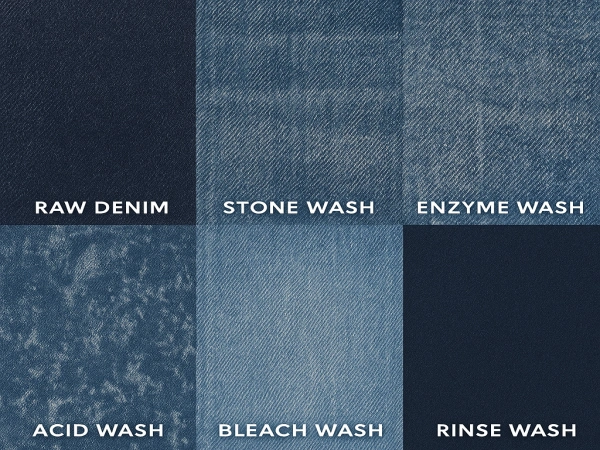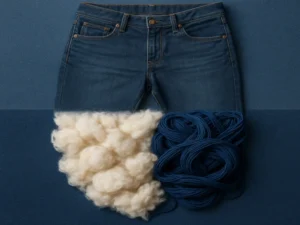1. Raw vs. Washed Denim: The Starting Point
Before exploring individual techniques, it’s important to distinguish between raw and washed denim. Raw denim, also known as dry denim, is fabric that has not undergone any washing or distressing after dyeing. It is stiff, dark, and prized for its ability to develop personalized fades over time. In contrast, washed denim has been treated to remove shrinkage tension and to give it a worn-in look or feel from the start.
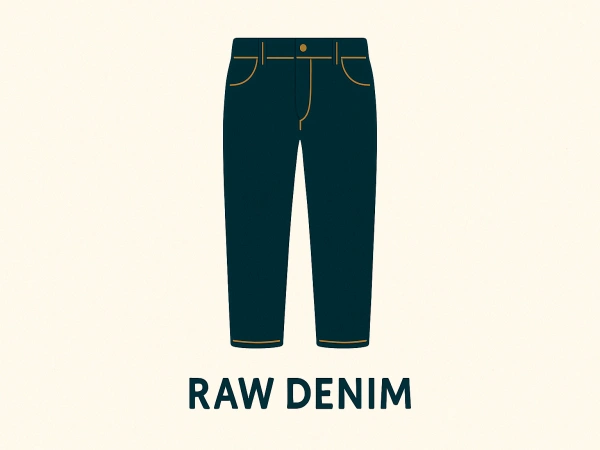
Key differences:
– Raw denim is ideal for denim purists or brands focused on heritage styles.
– Pre-washed denim offers more comfort and style variety right off the shelf.
2. Stone Wash: Classic Aging with Texture
Stone washing is one of the most iconic denim treatments. It involves tumbling jeans with pumice stones and sometimes enzymes to physically abrade the fabric surface.

Effects:
– Softens the fabric.
– Creates irregular fading and a vintage appearance.
– Weakens the fiber slightly due to mechanical abrasion.
Best for: Casual jeans with a retro or rugged look. Brands targeting a worn-in aesthetic often prefer this method.
3. Enzyme Wash: Eco-Friendly Softness and Fade
Enzyme washing uses biodegradable enzymes to break down cellulose on the denim surface, gently fading color and softening the hand feel without the heavy abrasion of stones.
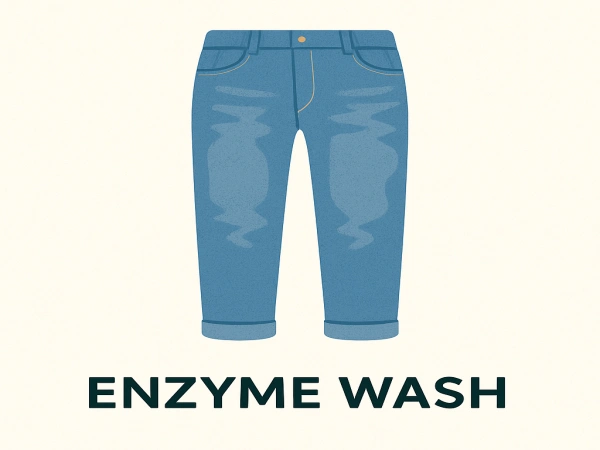
Effects:
– Uniform, clean fading.
– Gentle on fabric structure.
– Uses less water and energy than traditional methods.
Best for: Brands emphasizing sustainability, and for jeans requiring smooth finishes without exaggerated distressing.
4. Acid Wash (Snow Wash): High Contrast Drama
Acid washing uses pumice stones soaked in a bleach solution to create a random, dramatic contrast on the denim surface.

Effects:
– Strong white streaking and high-contrast visuals.
– Often associated with 1980s fashion.
– Can degrade fabric if not properly neutralized.
Best for: Streetwear collections or fashion-forward seasonal releases where boldness is key.
5. Bleach Wash: Light and Bright
Bleach wash involves soaking the fabric in diluted bleach to strip away indigo color and lighten the overall tone.
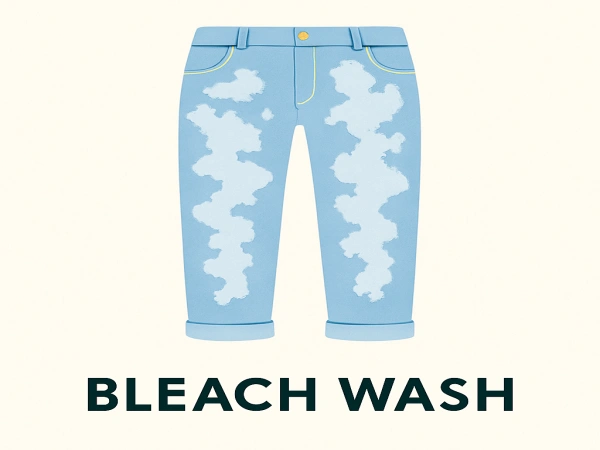
Effects:
– Produces pale, sun-bleached looks.
– Softens the fabric.
– Risks fabric yellowing or damage if overdone.
Best for: Summer denim, white denim styles, or pastel-colored jeans.
6. Rinse Wash: Minimalism with Function
Rinse washing is a basic technique where jeans are simply rinsed in water to remove excess dye and reduce stiffness.

Effects:
– Maintains dark indigo tone.
– Slightly softens fabric.
– Reduces shrinkage tension.
Best for: Workwear denim, dark denim lovers, or entry-level washes where clean and understated results are desired.
7. Sandblasting and Laser Washing: Surface Finishes with Precision
Sandblasting uses pressurized sand to wear down targeted areas of the jeans. Laser washing achieves similar worn effects using laser beams.
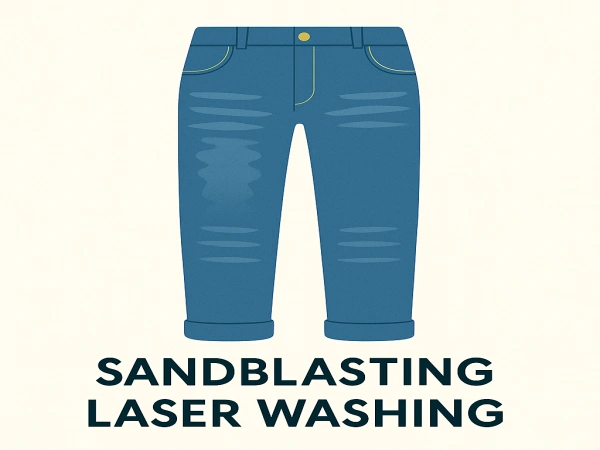
Effects:
– Controlled wear patterns, such as whiskers and thigh fading.
– Laser is more environmentally friendly and repeatable.
Best for: High-end brands or collections needing consistency and high visual accuracy in fading.
Caution: Sandblasting has been linked to health hazards for workers if not performed with proper protective equipment.
8. Ozone Wash: Sustainable Innovation
Ozone washing uses ozone gas to oxidize indigo dye, lightening jeans without water or harsh chemicals.
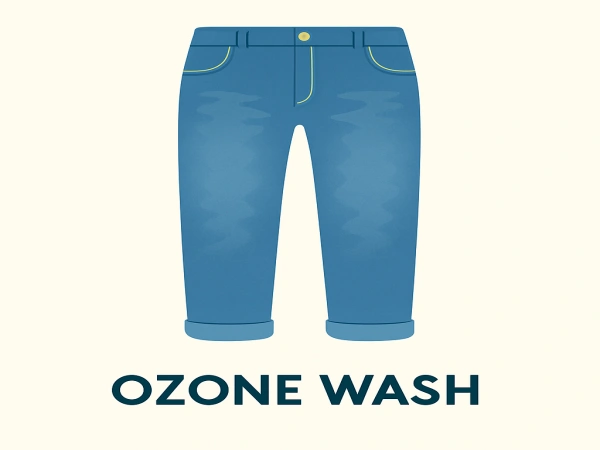
Effects:
– Vintage-like fading.
– Low water and energy use.
– Preserves fabric strength better than chemical alternatives.
Best for: Eco-conscious denim lines aiming for minimal environmental impact and clean aesthetics.
9. Effects on Fabric Strength and Longevity
Each washing method affects denim strength differently:
– Stone and acid washes weaken fiber through abrasion and chemical stress.
– Enzyme, rinse, and ozone washes maintain better integrity.
– Laser washing avoids mechanical stress entirely.
Tip: For jeans expected to endure repeated wear and washing, avoid highly destructive washes.
10.How should merchants choose the washing method for jeans?
Choosing a wash isn’t only a design decision; it’s strategic.
Considerations:
– Target audience: Casual consumers may prefer soft, washed denim. Enthusiasts may want raw.
– Price point: Intensive washes cost more in labor and processing.
– Sustainability goals: Enzyme, ozone, and laser methods appeal to eco-aware markets.
– Production capacity: Some washes are more scalable and consistent than others.
Example: A mass-market retailer may use rinse or enzyme washes for durability and cost control, while a boutique label may opt for hand-finished laser distressing.
Заключение
Washing is not only the final step in the complete production of denim fabrics, it is also a critical step because it affects the style, comfort and durability of jeans. Each washing method, from the aggressive character of stone and acid washes to the soft refinement of enzyme and rinse washes, serves a unique purpose.
Understanding how each method affects the fabric allows brands, designers, and even consumers to make informed decisions. Whether you are developing vintage-style denim with heavy fading or launching a sustainable collection with ozone or laser techniques, your wash choice directly impacts fabric performance, production cost, and environmental footprint.
Ultimately, there is no universal “best” wash. The right washing method depends on the intended aesthetic, customer expectations, and brand values. As innovation continues to drive forward both fashion and sustainability, the future of denim finishing lies in balancing creative expression with responsible production.

